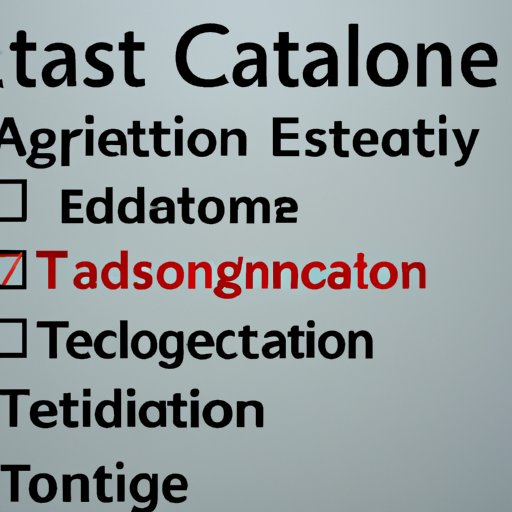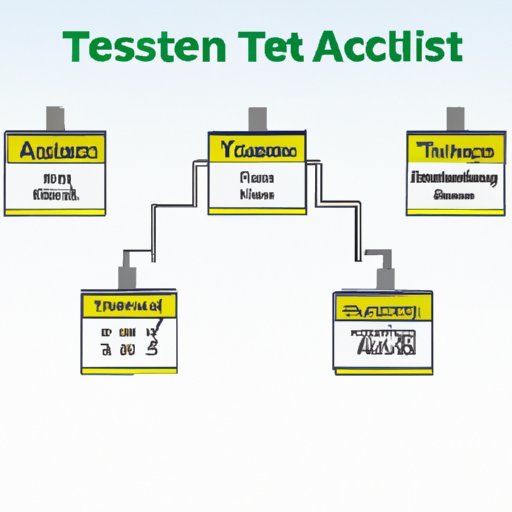Introduction
Automation testing is a method of software testing that uses specialized tools to run tests without the need for manual intervention. It is used to reduce the time and cost associated with testing and ensure the accuracy of results. This type of testing is particularly useful when dealing with high volumes of data or complex scenarios. In this article, we will explore the fundamentals of automation testing and offer step-by-step instructions on how to write test cases for it.

Fundamentals of Automation Testing and Writing Test Cases
Before writing any test cases for automation testing, it is important to understand the basics of automation testing. Automated tests are scripts that are written in a programming language such as Java, Python, or C#. These scripts are then executed by a computer to compare the actual results with the expected results. Automated tests can be run multiple times with different inputs, and the results can be compared against each other. This helps to identify any discrepancies or bugs in the application.
When writing test cases for automation testing, it is important to consider both the advantages and disadvantages of manual vs automated testing. Manual tests require human intervention and are therefore more time consuming and less accurate than automated tests. On the other hand, automated tests can be run quickly and accurately, and they can be used to test complex scenarios. Automation testing also requires less manpower, which makes it more cost effective.
Best Practices for Writing Test Cases for Automation Testing
Once you have a basic understanding of automation testing and its benefits, the next step is to identify test cases that can be automated. This can be done by analyzing the requirements of the application and identifying areas where automation can be used. Once these areas have been identified, a test plan should be created that outlines the steps that need to be taken to execute the tests.
The next step is to select the appropriate tools for automation testing. There are a variety of tools available, including open source and commercial solutions. The selection of the right tool will depend on the specific needs of the project. Once the tool has been selected, the test cases should be documented so that they can be easily understood by anyone who needs to review them.

Challenges Associated with Writing Test Cases for Automation Testing
While automation testing can provide many benefits, there are some challenges associated with it. One of the biggest challenges is finding the right balance between automation and manual testing. Too much automation can lead to a lack of coverage, while too little can lead to delays in the testing process. Therefore, it is important to determine the right amount of automation for each project.
Another challenge is understanding the limitations of automation testing. Automation testing can only cover certain aspects of an application, and it cannot replicate the experience of a user interacting with the system. Therefore, it is important to supplement automation testing with manual testing to ensure complete coverage.
Finally, it is important to remember that automation testing is not suitable for all test scenarios. Complex scenarios may require manual testing in order to ensure accuracy. Therefore, it is important to understand the capabilities of automation testing before attempting to automate a test case.
Examples of Real-World Projects Demonstrating Successful Automated Testing
One example of a successful automation testing project is the development of a self-driving car. Automation testing was used to validate the safety and reliability of the car’s systems. Tests were written to simulate various driving scenarios and the results were compared to the expected outcomes. The tests were successful and the car was able to drive safely in a variety of conditions.
Another example is the development of a web-based application. The application was tested using automated tests to ensure that it behaved correctly under different conditions. Tests were written to simulate user interactions and the results were compared to the expected outcomes. The tests were successful and the application performed as expected.
Finally, a third example is the development of an e-commerce platform. Automation testing was used to validate the functionality of the platform. Tests were written to simulate various customer interactions and the results were compared to the expected outcomes. The tests were successful and the platform was able to handle large amounts of traffic without any issues.
Conclusion
In conclusion, automation testing is a powerful tool that can be used to reduce the time and cost associated with testing. When writing test cases for automation testing, it is important to identify test cases that can be automated, create a test plan, select the appropriate tools, and document the test cases. Additionally, it is important to understand the limitations of automation testing and find the right balance between automation and manual testing. Finally, there are several examples of successful real-world projects that demonstrate the effectiveness of automation testing.
(Note: Is this article not meeting your expectations? Do you have knowledge or insights to share? Unlock new opportunities and expand your reach by joining our authors team. Click Registration to join us and share your expertise with our readers.)
